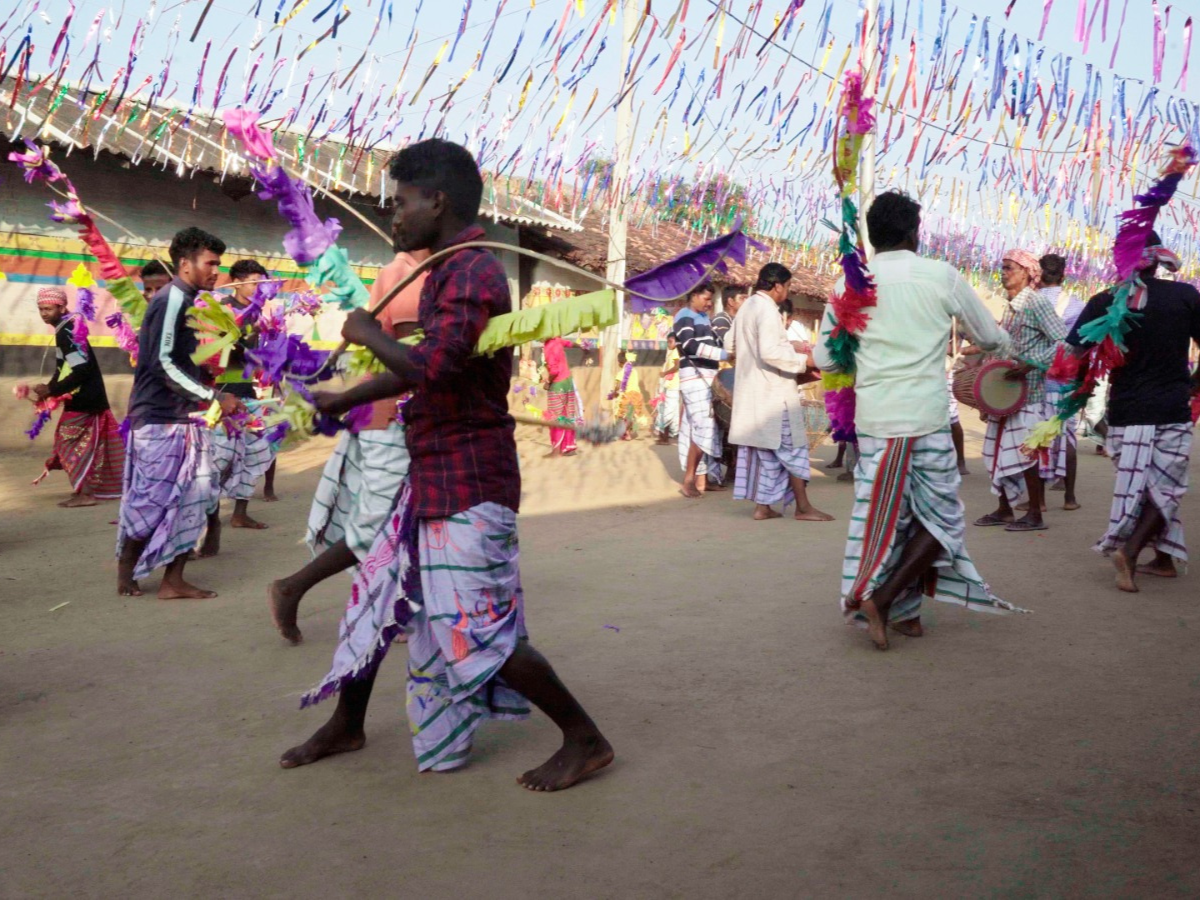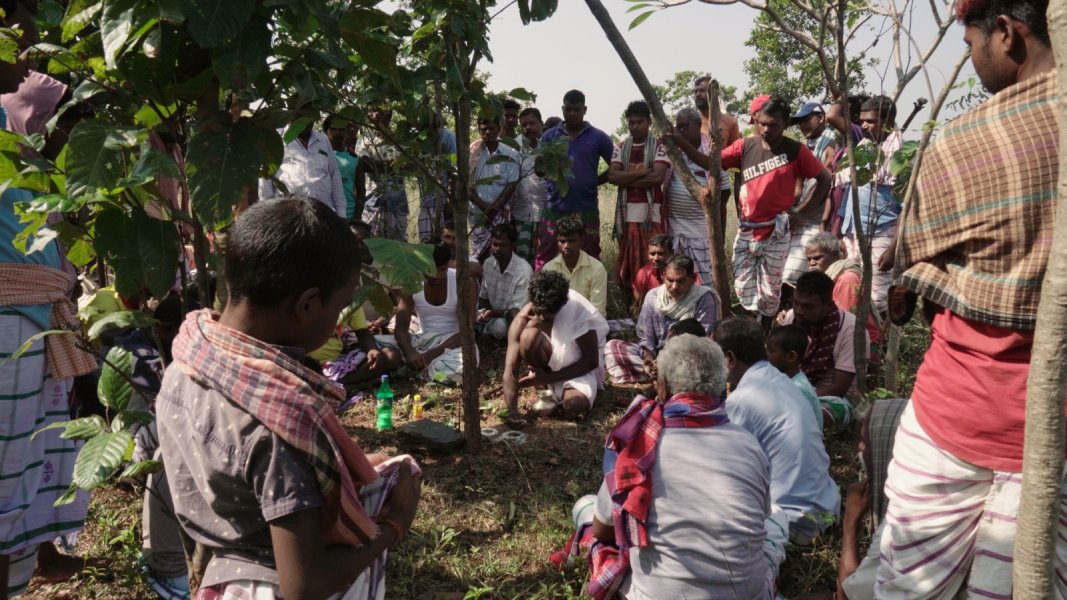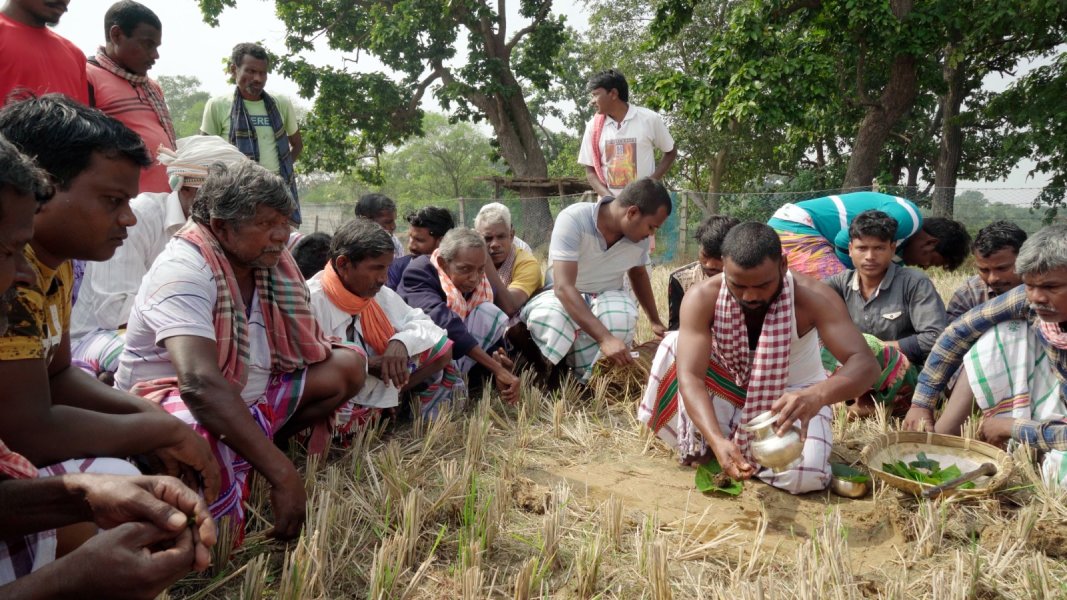State
Tribe Name
Art Type
short description
The Sohrai festival is a significant five-day celebration of the Santal tribe, residing primarily in northern Odisha, typically held at the onset of the winter harvest in October-November. Rooted in their agrarian lifestyle, Sohrai is dedicated to honoring cattle, vital to their farming operations and considered a symbol of wealth. The timing of the festival is decided by the village headman. As followers of the Sarna religion, the Santal offer thanks to their deities, spirits, cattle, and agricultural tools for a successful harvest.
Thumbnail

Filter Postion
Left
Filter Background
Off
Theme
Filter Header Image

content
Image

description
The Sohrai festival is a significant five-day celebration of the Santal tribe, residing primarily in northern Odisha, typically held at the onset of the winter harvest in October-November. Rooted in their agrarian lifestyle, Sohrai is dedicated to honoring cattle, vital to their farming operations and considered a symbol of wealth. The timing of the festival is decided by the village headman. As followers of the Sarna religion, the Santal offer thanks to their deities, spirits, cattle, and agricultural tools for a successful harvest.
Image Mode
landscape
Image

description
The festival commences with the men cleaning the sacred grove (Jahera) and the priest (Naike) undertaking purification rituals. A unique ritual involves five men becoming possessed by deities, conveying blessings to the community. The second day sees women decorating homes and inviting relatives. Men accompany the priest to the sacred grove, offering rice and sacrificing chicks to deities. A ritual enclosure is prepared where thanks are given for the cattle's well-being, symbolized by an egg. The cattle are then herded to walk over this enclosure, with the owner of the egg-breaking animal being honored. The third day involves women decorating verandas and cattle sheds. Men bring and decorate trees, tying cattle to them, and ritually wash plough yokes. Each household head harvests paddy and prepares a ritual enclosure, placing the harvested paddy within to create talismans for the cattle.
Image Mode
landscape
Image

description
Offerings of rice beer are made to deities for the well-being of both people and animals. Young men perform the Dantha dance, and men and women visit the cattle of village leaders, urging them to "dance" as a form of celebration after their hard work. The fourth day focuses on the cattle of every household being tied to decorated poles, with men and women visiting them, urging them to dance and offering prayers of thanks. This is followed by a night of communal merriment with traditional music and dance. The final day involves elderly women preparing leaf cups and sharing rice beer. They, along with drummers, collect supplies for a community feast, culminating in a grand feast and continued celebrations into the night, signifying community solidarity and gratitude.
Image Mode
landscape
promoted
On
Verified
On
